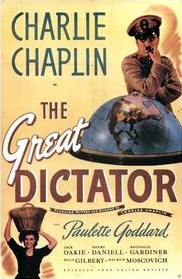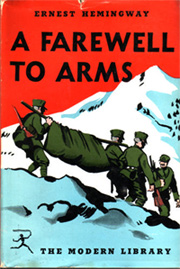|
|
The triple alliance among art,
ethics and politics:
A tension between universal communicability and fleeting political
views
(2007, Winter) BAP Quarterly, 3(8)
|
|

Introduction
Should ethical values play a role in aesthetical judgment? This topic has been
hotly debated among philosophers of art, artists, art historians, and art
critics for a long time. Although Gaut (2001) declared that ethicism, which
asserts that aesthetical values of art are dependent on whether the message
embedded in the work is morally right or wrong, has won in the long debate
over art and ethics. I, however, think that this issue is far from reaching a
conclusive closure. It is not the intention of this essay to resolve this
question once and for all. Neither will it pour new wine into the old bottle.
Rather, this article is a humble attempt to give some thoughts for artists and
art critics to consider.
Granted that moral goodness or badness of certain works of art would affect
their aesthetical quality, but is it always the case that this kind of
ethical-aesthetical association is influenced by one’s political orientation?
The term “triple alliance” in the title does not imply that art, ethics, and
politics always go together. While ethical judgments are not necessarily
political judgments, political views expressed in art always carry a strong
moral undertone. For example, an art critic may dislike a movie for its
violent and obscene content. In this case his moral statements are not
political unless the critic relates these issues to gun control and feminist
movement. On the other hand, political statements are inevitably “moral.” In
politics the polarity of “us vs. them” can be found everywhere. It is true
that confrontations also happen outside the political domain. A quantitative
researcher and a qualitative researcher could disagree with each other, but it
is extremely rare to see one researcher to consider the other side morally
wrong rather than methodologically wrong. Similarly, we would be hard pressed
to find a Fisherian statistician call a Bayesian “evil” or vice versa.
However, usually political commentaries, no matter where they are
expressed--in words or artwork--, articulate the argument by presenting how
morally right the proponents are and how morally wrong the rivals are. If
moral values are relevant to artistic values and the ethical standard is fused
with certain political views, we should scrutinize the meanings of this triple
alliance. In scientific inquiry it is a common practice to examine many rival
models by asking “what-if” questions. By the same token, as political views
are fleeting all the time, art critics might also construct “alternate
realities” to evaluate whether the triple alliance among art, ethics, and
politics is necessary or contingent.
Images of Germany and Italy in art
Triumph of the Will
 The
example cited by Gaut to support his notion of art-ethics inter-dependence is
a political one: Leni Riefenstahl’s famous film, Triumph of the Will,
is a glowingly enthusiastic account of the 1934 Nuremberg Nazi Party rally.
Needless to say, the film is today charged as bad art because it is nothing
more than propaganda for Adolf Hitler. The case is definitely clear-cut; Nazi
Germany was defeated and its ideology was completely discredited. It is
important to emphasize that I am not a Nazi sympathizer. But just for the sake
of philosophical argument, let’s ask a question in a counterfactual manner:
What would have happened if Nazi Germany had won World War Two, or forced a
truce with the Allied powers and thus the regime had continued? Would
Triumph of the Will still be considered poor art? The
example cited by Gaut to support his notion of art-ethics inter-dependence is
a political one: Leni Riefenstahl’s famous film, Triumph of the Will,
is a glowingly enthusiastic account of the 1934 Nuremberg Nazi Party rally.
Needless to say, the film is today charged as bad art because it is nothing
more than propaganda for Adolf Hitler. The case is definitely clear-cut; Nazi
Germany was defeated and its ideology was completely discredited. It is
important to emphasize that I am not a Nazi sympathizer. But just for the sake
of philosophical argument, let’s ask a question in a counterfactual manner:
What would have happened if Nazi Germany had won World War Two, or forced a
truce with the Allied powers and thus the regime had continued? Would
Triumph of the Will still be considered poor art?
Schindler’s List
Interestingly enough, anti-Nazi movies are considered inappropriate for
different political reasons in different national contexts. For example,
Schindler’s List directed by Steven Spielberg in 1993 presents the true
story of Nazi party member Oskar Schindler who saved over 1,100 Jews from
concentration camps during the Holocaust. Who can argue against the moral
goodness of this film? Indeed, the movie was not welcome in several Islamic
countries, and Malaysia banned it for alleging it as Zionist propaganda,
evidenced by its depiction of the Jews as “stout-hearted” and “intelligent”
(New York Times, 1994). In the eyes of Malaysian Muslims, perhaps
Schindler’s List could even be morally and aesthetically equated with
Triumph of the Will. Consider this thought experiment: Had Israel never
established a nation in 1948, would the movie be universally accepted as a
masterpiece today?
The Great Dictator
 Before the Axis of power was destroyed, artworks portraying Germany and Italy
in a negative fashion were a taboo. When Charlie Chaplin announced his plan in
1939 to make the movie The Great Dictator, which is a mockery of Adolf
Hitler, the British government tried to persuade him to cancel the project,
because the government was afraid that this insulting film would antagonize
Hitler and provoke further confrontation between England and Germany.
Similarly, today any satirical movie of Kim Jong Il might be considered
sensitive and even damaging. In spite of the pressure, Chaplin went on to
produce The Great Dictator and released the film in 1940. But on the
other side of the Atlantic Ocean, several Chicago theaters refused to show
this movie because it might enrage the German population in Illinois. American
Communist movement also denounced the film as Stalin had signed the
non-aggression pact with Hitler before the release of the film (Malan, 1989).
But after the Soviet Union, the Great Britain, and the United States joined
hand in hand to fight the Nazis, suddenly the movie was highly regarded. It
was shown in London during the Battle of Britain for boosting morale. General
Eisenhower asked the French ally to dub films acted by Chaplin for
distribution in France after France was liberated. No doubt today The Great
Dictator has elevated to the status of seminal classic. It is true that
none of the initial rejections of The Great Dictator is based upon
aesthetics. But is it fair to say that to some extent subsequent and current
aesthetical praises of this Chaplin movie can be attributed to its moral
righteousness, which is tied to its once unpopular political view? How would
have been this movie received in the American context if the US did not enter
WWII? Before the Axis of power was destroyed, artworks portraying Germany and Italy
in a negative fashion were a taboo. When Charlie Chaplin announced his plan in
1939 to make the movie The Great Dictator, which is a mockery of Adolf
Hitler, the British government tried to persuade him to cancel the project,
because the government was afraid that this insulting film would antagonize
Hitler and provoke further confrontation between England and Germany.
Similarly, today any satirical movie of Kim Jong Il might be considered
sensitive and even damaging. In spite of the pressure, Chaplin went on to
produce The Great Dictator and released the film in 1940. But on the
other side of the Atlantic Ocean, several Chicago theaters refused to show
this movie because it might enrage the German population in Illinois. American
Communist movement also denounced the film as Stalin had signed the
non-aggression pact with Hitler before the release of the film (Malan, 1989).
But after the Soviet Union, the Great Britain, and the United States joined
hand in hand to fight the Nazis, suddenly the movie was highly regarded. It
was shown in London during the Battle of Britain for boosting morale. General
Eisenhower asked the French ally to dub films acted by Chaplin for
distribution in France after France was liberated. No doubt today The Great
Dictator has elevated to the status of seminal classic. It is true that
none of the initial rejections of The Great Dictator is based upon
aesthetics. But is it fair to say that to some extent subsequent and current
aesthetical praises of this Chaplin movie can be attributed to its moral
righteousness, which is tied to its once unpopular political view? How would
have been this movie received in the American context if the US did not enter
WWII?
A Farewell to Arms
 Before the breakout of World War Two, it was also politically incorrect to
insult Italy. In Hemingway’s novel A Farewell to Arms, Italy was
presented in a non-desirable fashion. Before World War I, Italy was an ally of
Germany and Austria. However, the Allies lured Italy to switch sides by
promising Italy the land it had requested from Austria. In return to the
promised reward, the mission of Italy's army was to hinder the Austrian troops
from helping the Germans in France. But since Italian army was ill equipped,
the battle caused the death of 500,000 Italian soldiers in 1916 alone. This
was the setting of A Farewell to Arms. In 1929 Italy banned the novel
due to its account of the disastrous Italian retreat following the Battle of
Caporetto. Americans did not take this insult to their ally in World War I
lightly. In the same year five issues of Scribner’s Magazine were
prohibited to be sold in Boston because they printed the story of A
Farewell to Arms (Haight, & Grannis, 1978). Needless to say, during and
after World War II the American view of A Farewell to Arms made a
180-degree turn-around. However, had Italy switched sides again in World WarII,
would this novel still have been considered politically incorrect? Before the breakout of World War Two, it was also politically incorrect to
insult Italy. In Hemingway’s novel A Farewell to Arms, Italy was
presented in a non-desirable fashion. Before World War I, Italy was an ally of
Germany and Austria. However, the Allies lured Italy to switch sides by
promising Italy the land it had requested from Austria. In return to the
promised reward, the mission of Italy's army was to hinder the Austrian troops
from helping the Germans in France. But since Italian army was ill equipped,
the battle caused the death of 500,000 Italian soldiers in 1916 alone. This
was the setting of A Farewell to Arms. In 1929 Italy banned the novel
due to its account of the disastrous Italian retreat following the Battle of
Caporetto. Americans did not take this insult to their ally in World War I
lightly. In the same year five issues of Scribner’s Magazine were
prohibited to be sold in Boston because they printed the story of A
Farewell to Arms (Haight, & Grannis, 1978). Needless to say, during and
after World War II the American view of A Farewell to Arms made a
180-degree turn-around. However, had Italy switched sides again in World WarII,
would this novel still have been considered politically incorrect?
Cases in American movies
The Spirit of 1776
Next, consider two movies made in the United States during the early 20th
century. In 1917, with all good intentions a German-Jewish immigrant named
Goldstein produced a movie entitled The Spirit of 1776 as paying
tribute to the founding fathers of America. It is logical to think that no one
could dispute the ethical goodness and politically correctness of this movie.
However, Goldstein made a fatal mistake by demonizing the British Empire when
America decided to give a hand to England in fighting against Kaiser’s
Germany. President Wilson banned the film using the Sedition Act as his legal
base. In support of the seizure of the film, Judge Beldsoe wrote, “History is
history and fact is fact . . . the United States is confronted with . . . the
greatest emergency . . . [its] history. There is now required . . . the
greatest devotion to a common cause . . . this is no time . . . for souring
dissension among [the] people, and of creating animosity . . .[with the]
allies.” Goldstein was arrested and convicted of espionage in having attempted
to incite a mutiny of the U.S. Armed Forces (Collins, 2001). Had Mel Gibson
acted in Patriots in 1917 or 1941, would he have been another Robert
Goldstein?
The Birth of a Nation
 Unlike The Spirit of 1776, in 1915, another movie entitled The Birth
of a Nation, directed by D.W. Griffith and aimed to promote American
cultural heritage, received a much nicer treatment. By today’s standard, this
movie is far more ethically and politically controversial than The Spirit
of 1776. Although the film is highly ranked in the US film history for its
technical innovations, it is clear that the message of the film has strong
elements of white supremacy. However, over the next twenty years The Birth
of a Nation became one of the most admired and profitable films ever
produced by Hollywood until it was dethroned by Gone with the Wind in
1940. In 1992 the United States Library of Congress deemed it “culturally
significant” and selected it for preservation in the National Film Registry
(Lang, 1994; Michele, 2003). If the film had offended one of key allies of
America rather than “Negros,” could it have easily gotten away with
such a portrayal? Unlike The Spirit of 1776, in 1915, another movie entitled The Birth
of a Nation, directed by D.W. Griffith and aimed to promote American
cultural heritage, received a much nicer treatment. By today’s standard, this
movie is far more ethically and politically controversial than The Spirit
of 1776. Although the film is highly ranked in the US film history for its
technical innovations, it is clear that the message of the film has strong
elements of white supremacy. However, over the next twenty years The Birth
of a Nation became one of the most admired and profitable films ever
produced by Hollywood until it was dethroned by Gone with the Wind in
1940. In 1992 the United States Library of Congress deemed it “culturally
significant” and selected it for preservation in the National Film Registry
(Lang, 1994; Michele, 2003). If the film had offended one of key allies of
America rather than “Negros,” could it have easily gotten away with
such a portrayal?
Discussion
At first glance, the above examples seem to promote some form of relativism or
to dissociate political views from moral judgment, and thus deny ethicism.
Actually, it is beyond dispute that Holocaust, Nanking Massacre, Gulag, and
Red Khmer are absolute evils, and any artworks that glorify these crimes
should never be artistically appreciated. However, please keep in mind that
people affirm their final judgment long after the dust has settled. But in
1934 could Leni Riefenstahl foresee the Holocaust and World War II while
making The Triumph of the Will? In 1939 when the Soviet Union and the
Nazi Germany were at peace, how could Communists endorse The Great Dictator?
 As a fallible human being, I regard the entanglement of artistic, ethical, and
political elements as a risky enterprise. In one of the current exhibitions
entitled “Defining moments in Photography, 1967-2007” held in the Museum of
Contemporary Art, Chicago, Robert Heinechen’s photograph Pinup taken in
1968 is included as one of the most important photographic artworks during the
last twenty years. Robert Heinechen was a jet pilot but became an anti-war
activist after leaving the service. In Pinup, a half-naked woman and a
newspaper showing a headline “Ten Southmen killed in action” are superimposed.
This disturbing image, blending death and sexuality, conveys a forcefully
moral and political message that American men were exploited by the government
while women were exploited by pornography. Unlike World War II, the Cold War
did not end with a decisive victory favoring America. The Soviet Union
collapsed and the Berlin Wall was dismantled, yet Vietnam, Cuba, and North
Korea still existed though Vietnam has transformed its economy from central
planning to market-driven capitalism. However, if half a century from now the
Vietnamese regime had ceased to exist and historians made a 180-degree turn
about the Vietnam War, could Pinup remain in the list of defining
moments in photography? While I wholeheartedly consider Ansel Adam’s photos of
nature’s beauty timeless, I have reservations about Heinechen’s work. As a fallible human being, I regard the entanglement of artistic, ethical, and
political elements as a risky enterprise. In one of the current exhibitions
entitled “Defining moments in Photography, 1967-2007” held in the Museum of
Contemporary Art, Chicago, Robert Heinechen’s photograph Pinup taken in
1968 is included as one of the most important photographic artworks during the
last twenty years. Robert Heinechen was a jet pilot but became an anti-war
activist after leaving the service. In Pinup, a half-naked woman and a
newspaper showing a headline “Ten Southmen killed in action” are superimposed.
This disturbing image, blending death and sexuality, conveys a forcefully
moral and political message that American men were exploited by the government
while women were exploited by pornography. Unlike World War II, the Cold War
did not end with a decisive victory favoring America. The Soviet Union
collapsed and the Berlin Wall was dismantled, yet Vietnam, Cuba, and North
Korea still existed though Vietnam has transformed its economy from central
planning to market-driven capitalism. However, if half a century from now the
Vietnamese regime had ceased to exist and historians made a 180-degree turn
about the Vietnam War, could Pinup remain in the list of defining
moments in photography? While I wholeheartedly consider Ansel Adam’s photos of
nature’s beauty timeless, I have reservations about Heinechen’s work.
Being partially inspired by Kant (Allison, 2001), I treat contentment in the
beautiful as a disinterested and free satisfaction. To be specific, our liking
of art, if it is to be aesthetical, must be free from all interests, including
political interests. If we look at art aesthetically, we should not want to
know whether anything depends or can depend on the existence of thing either
for ourselves or for any one else. Further, an aesthetical judgment is a
judgment without a concept, especially political ideology. When we find an
object beautiful, we need no definite concept or rule of it. Moreover, some
Kantians are opposed to the distraction by emotion of an art. What those
Kantians looks for in an aesthetically valuable object is universal
communicability, regardless of whether one is a capitalist, a communist, a
Jew, a Christian, a Muslim, an American, a German, or a Chinese. It does not
mean that every one must agree that the object is beautiful; instead, the
particular judgment invites universal assent: it claims that every one ought
to give his approval to the object in question and also describe it as
beautiful. It presupposes a “common sense”—the state of mind resulting from
the free play of our cognitive powers and imagination. If readers object to
the preceding idea, it is fine. We are aesthetically, epistemologically, and
methodologically different, not morally different.
References
Allison, Henry E. (2001). Kant's theory of taste: a reading of the Critique of aesthetic judgment. Cambridge, U.K.: Cambridge University Press.
Collins, John. (2001). The tragic odyssey of Robert Goldstein. Retrieved from
http://www.angelfire.com/bc/RPPS/revolution_movies/golstn.htm
Guat, Berys. (2001). Art and ethics. In Berys Gaut & Dominic Mclver Lopes (Eds.),
The Routledge companion to aesthetics (pp. 341-351). New York: Routledge.
Haight, Anne Lyon, & Grannis, Chandler B. (1978). Banned Books 387 B.C. To 1978 A.D. New York: R.R. Bowker Co.
Lang, Robert (Ed.). (1994). The Birth of a nation: D.W. Griffith, director. N.J.: Rutgers University Press.
Michele, Faith Wallace. (2003). The good lynching and "The Birth of a Nation": Discourses and aesthetics of Jim Crow,
Cinema Journal 43, 85-104.
Maland, Charles J. (1989). Chaplin and American culture: The evolution of a star image. New Jersey: Princeton.
New York Times. (1994). Muslims only lose with 'Schindler' Ban.
Navigation
|

